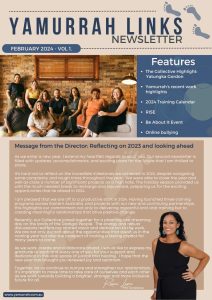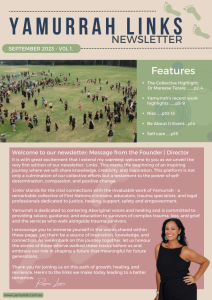Publications
Looking where the light is: creating and restoring safety and healing
A cultural framework for addressing child sexual abuse in Aboriginal and Torres Strait Islander communities.
Looking where the light is: creating and restoring safety and healing
Circle Sentencing in New South Wales A Review and Evaluation
Circle sentencing was first developed in Canada in 1992 for the sentencing of Indigenous offenders in a community setting, with aims including empowering and healing communities, providing more meaningful sentencing options, supporting offender rehabilitation, and supporting victims.
Research monograph
Access to Justice Roundtable
We would particularly like to thank Professor Julian Disney, of the Social Justice Project, University of New South Wales, for his collaboration in the workshop and the speakers who provided papers. We are grateful to the Presiding Officers and staff of the New South Wales Parliament for providing the facilities, in particular Mr Graham Spindler, Manager of the Parliamentary Education and Community Relations Section.
Access to Justice Roundtable
RECLAIMING OUR SAFE WAYS OF PARENTING HOW TRAUMA RESEARCH IS SUPPORTING ABORIGINAL WAYS OF CHILD REARING
Rowena Lawrie and Carolyn Cousins look at traditional Aboriginal styles of parenting in the light of Western attachment theory research that validates those practices.
RECLAIMING OUR SAFE WAYS OF PARENTING HOW TRAUMA RESEARCH IS SUPPORTING ABORIGINAL WAYS OF CHILD REARING
HOLISTIC COMMUNITY JUSTICE: A PROPOSED RESPONSE TO FAMILY VIOLENCE IN ABORIGINAL COMMUNITIES
The discussion paper released by the Aboriginal Justice Advisory Council (‘AJAC’), entitled Holistic Community Justice: A Proposed Response to Aboriginal Family Violence. l explores the current criminal justice response to Aboriginal family violence, including the sentencing of offenders and the rights of victims. The purpose of this article is to generate debate about the issues it examines and the ideas it proposes.
HOLISTIC COMMUNITY JUSTICE: A PROPOSED RESPONSE TO FAMILY VIOLENCE IN ABORIGINAL COMMUNITIES
Speak Out Speak Strong: Rising Imprisonment Rates of Aboriginal Women
Aboriginal women constitute approximately 31 percent of all women imprisoned in NSW, and between 25-31 percent of the remand population. Aboriginal men are also over-represented in the criminal justice system and make up approximately 19 percent of the male prison population. The rate at which Aboriginal women are imprisoned in NSW has increased by 14 percent since 1995. The national imprisonment rate increased by 37 percent between 1988 and 1998.
Speak Out Speak Strong: Rising Imprisonment Rates of Aboriginal Women



